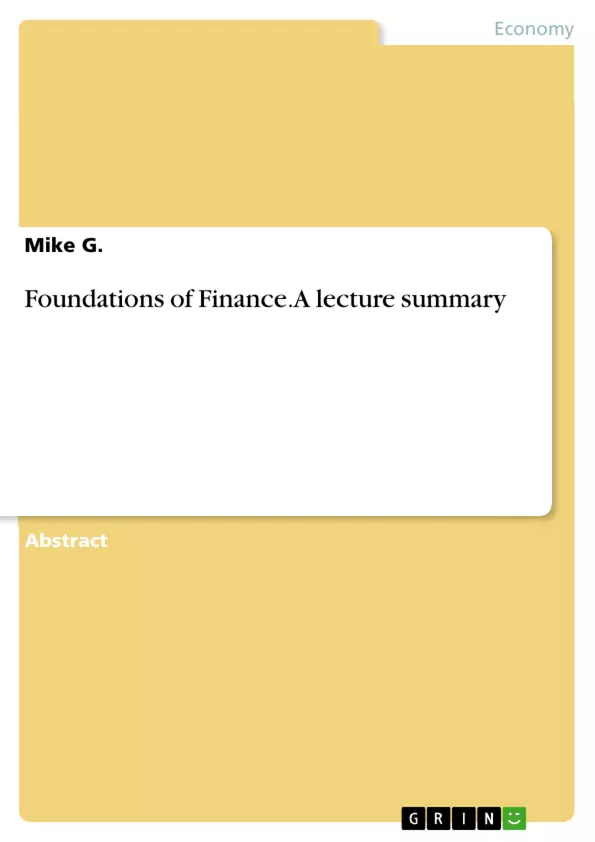This text is a lecture transcript of the Foundations of Finance Class of 2017 dealing with the basic principles of financial asset evaluation.
The lecturer told about the underlying assumptions and operating principles of the stock markets and introduced several (basic) ways of calculation. Supported by several illustrations inspired by the lecturer's board notes, topics like Value, Bonds, Risk, CAPM (capital asset pricing model), Derivatives and an outlook on Behavioral Finance are included in this book.
- Quote paper
- Mike G. (Author), 2017, Foundations of Finance. A lecture summary, Munich, GRIN Verlag, https://www.grin.com/document/366705
Look inside the ebook



